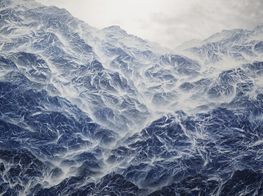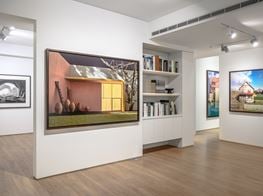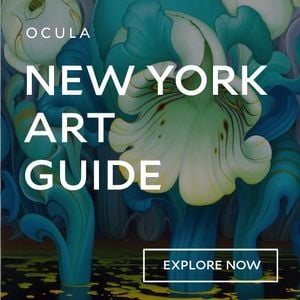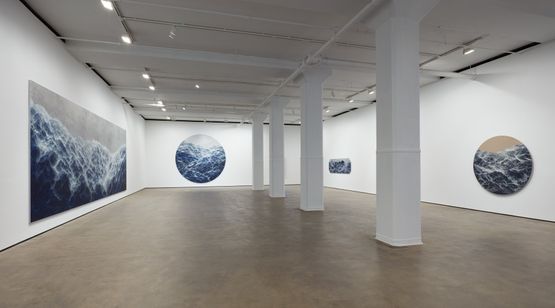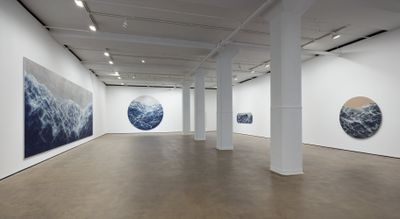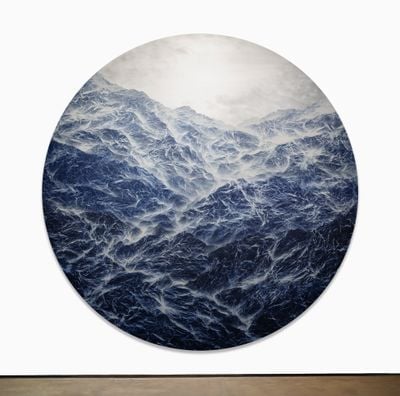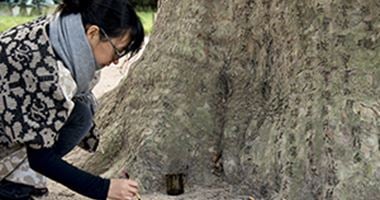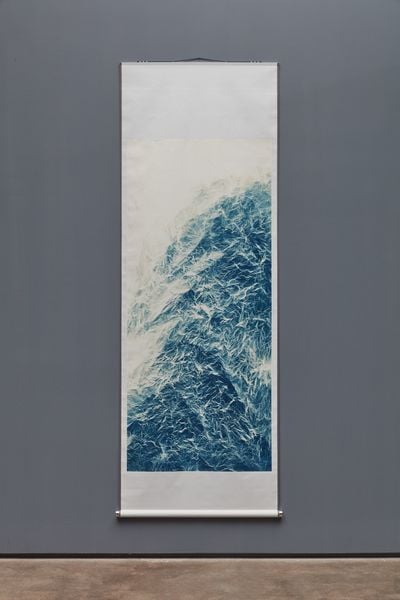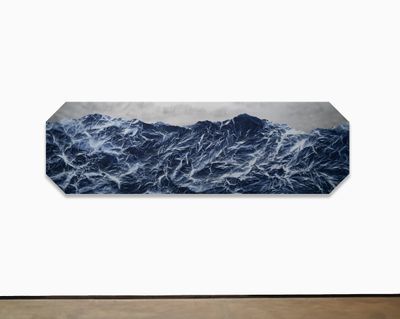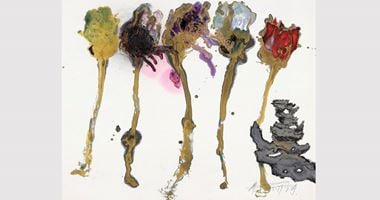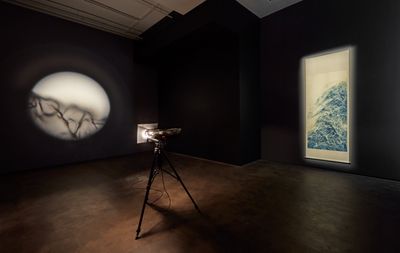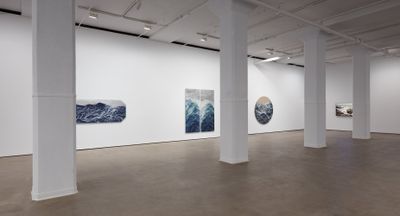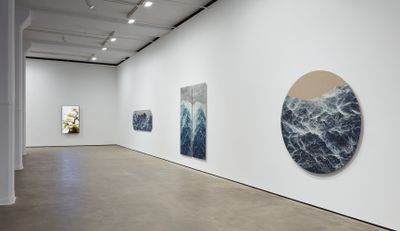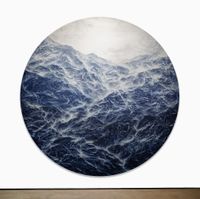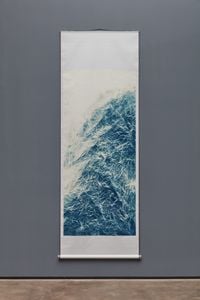Wu Chi-Tsung's Cyanotypes Reinvent Chinese Landscape Painting
Sponsored Transcreation | Sean Kelly
Resembling waves or maelstroms; icy mountains or geological rocks, the textured surfaces of Wu Chi-Tsung's Xuan paper collages open up many visual possibilities.
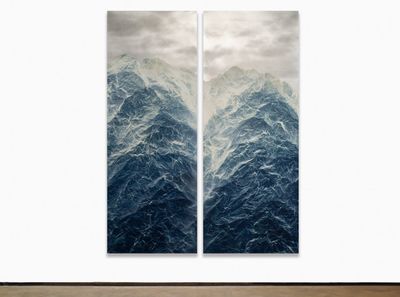
Wu Chi-Tsung, Cyano-Collage 119 (2021). Cyanotype photography, Xuan paper, acrylic gel, acrylic, mounted on aluminium board in two parts. Each panel: 225 x 91.4 cm; approx. overall: 225 x 180 cm. Courtesy the artist and Sean Kelly.
For his first solo exhibition in the United States at Sean Kelly in New York (jing-atmospheres, 5 November–18 December 2021), Taiwanese artist Wu Chi-Tsung reimagines traditional Chinese landscape painting through film, installation, and photography.
Within this stunning, formally innovative body of works, his 'Cyano-Collage' series (2021) utilises Xuan paper treated with photosensitive coating and hung outside to expose them to sunlight. After developing the papers under liquid, the artist combines and mounts them on aluminium.
Each work in the series contains multiple pieces of Xuan paper, seamlessly collaged into unified compositions with no discernable boundaries. Cyano-Collage 120, for example, resembles a monumental painting of the ocean with thunderous, cerulean waves.
The beauty of these cyanotype collages is that they are both hyper-realistic and indeterminable, resisting any fixed reading.
These five 'Cyano-Collage' works range in size, though the largest ones span entire walls. (The artist built a vast studio to produce this series.)
To complete their surfaces, Chi-Tsung applies white acrylic as a mist, which lends a sense of depth to the landscapes. Sometimes this spectral white acrylic resembles an intense energy surge.
The beauty of these cyanotype collages is that they are both hyper-realistic and indeterminable, resisting any fixed reading.
'They could be anything, because they are not representing any real landscape', the artist has explained. 'This is the spirit of a Chinese landscape.'
The 'Cyano-Collage' works are based on Chinese shan shui paintings, which literally translates to 'mountain-water-pictures'. And like shan shui, which do not follow Western linear perspective, the 'Cyano-Collage' works encourage mobile viewing, inviting the eye to move around the work and construct the image in the process.
Formally trained in Chinese calligraphy and ink art, Chi-Tsung explores the essence of Chinese landscape painting and what it might offer the viewer.
In 2016, he turned to photography to do this. Unsatisfied with the medium's contemporary formats, Chi-Tsung turned to cyanotype—a method that has been used since the mid-1800s.
Various artists, most notably Robert Rauschenberg early in his career, have experimented with the cyanotype process. Drawn to its use of light rather than the dark room, the sun is as important a material to Chi-Tsung as Xuan paper.
Developing the images by exposing them to sunlight, cyanotype offers Chi-Tsung a time- and chance-based process, with the paper's crumpled surface encouraging different tonalities.
'The best works,' the artist has noted, 'always come from some kind of coincidence . . . Most artists have a strong ego. We try to control our work. But the more you try to control it, the more likely you lose the possibility. Let the work grow in the way it should.'
While invigorating the Chinese landscape tradition, cyanotypes also offer an exercise in ego depletion, with Chu-Tsing relinquishing control to put faith in the material instead.
The artist's deference to the life and agency of materials is also evident in the installation Dust (2006), situated in the lower level of the gallery. A camera is positioned at one end of the darkened room with its lens focused on the light of a projector installed at the opposite end.
The camera feeds a live video signal to the projector, which projects this recording of the circulation of dust particles in the room onto the wall behind the camera. As viewers move through the space, they disrupt and speed up the flickering and glimmering of the enlarged dust particles projected on the wall.
The result is unexpectedly spiritual: an effervescent projection of colourful, shimmering dots that swirl and move energetically in an otherworldly ambiance.
Particles of dust are transformed into an entire cosmos. The material here is not only the technological support of the camera and projector, but also dust itself—something so banal and ubiquitous that Chi-Tsung animates with life and verve of its own.
Chi-Tsung refers to the Buddhist term zi xing (自性), which translates to 'self-being', or one's own nature.
'If I could just lower my ego,' he says, 'and let the material show what it is, at the same time I could get real freedom through that. In this way I am helping the material to find its own being.'
The brilliance of Chi-Tsung's works lies in the fact that he elevates materials—dust, Xuan paper, and sunlight—beyond human meanings and uses, with an unerring sense that the material is as in control of the final outcome as the artist himself. —[O]

